London Festival Opera appeared for the first time in an al fresco performance at the ancient ruins at Bayham Abbey. The large audience picnicked in the grounds before the performance and sipped champagne as the singers sang celebrated arias and ensembles from the words of Handel, Mozart, Bizet, Verdi and Gilbert & Sullivan. There are plans to return to the Abbey in August 2026.
The Wedding Ceremony
There is such a wide range of music to choose from and it can be dauting knowing where to start. Our advice, for experience, is to make a list of what music has a special meaning for you and do not be afraid to ‘think out of the box’. Depending on the location and style of wedding you are planning there may be various times of the day where you need different types of music. You may have a dinner the evening before you Wedding Day and on the day itself you may need music for the Ceremony and Wedding Breakfast or Dinner. You may then wish to dance the night away with a Disco at the end of the evening.
Opera can bring a multi-faceted entertainment that could be the perfect ingredient for the various stages of the celebrations. Also, opera transcends language and could be the perfect entertainment for multi national gatherings as well as brining a unique element of sophistication.
For many weddings London Festival Opera has supplied a soloist or group of singers to perform at a key moment of the Wedding Ceremony, perhaps during the signing of the register, where something extra special and emotional is required. Some Brides and Grooms choose something religious such as a version of ‘Ave Maria’ but others choose something secular like ‘Summertime’ or perhaps an operatic aria by Mozart or Puccini, or an operatic version of a Pop Song.
Please do call London Festival Opera to discuss arranging an extra-special element of live music at your Wedding Ceremony.
Call us now to discuss on 07802 183847 or send an email to philip@londonfestivalopera.co.uk
It was a great pleasure, as always, to return to the magnificent and historic Goldsmiths’ Hall in the City of London for an ‘in-house’ opera gala for the Worshipful Company of Goldsmiths’ and their guests. The evening began with a surprise burst of opera in the Drawing Room during the drinks reception, and then continued with the main performance during the courses of dinner in The Hall. The performers wore Victoria evening gowns for an added visual impact. The Goldsmiths’ Hall has one of the finest grand pianos in London: our pianist, Jenny, loves it so much she declared she would be prepared to lodge underneath it permanently!
The Goldsmiths’ Company has been located on the site since 1339.The present Hall, by Philip Hardwick, was built in the 1830’s and remains much as he designed it. The Hall and other state rooms have been used for a host of films including most recently for Buckingham Palace in ‘The Crown’.
Magical opera in an enchanting setting!
London Festival Opera has a wealth of experience in creating the perfect selection of opera for a weddings. We recently returned from a very special wedding in Switzerland at the Gstaad Palace Hotel (pictured) one of the most enchanting settings in the world! Gstaad has long been a destination for high society and the international jet set is part of the municipality of Saanen and is known as a major ski resort.
We worked closely with the Bride and Groom and looked at the wide range of repertoire available. One Bride for a wedding in London wanted something very different and made her entry into the ceremony accompanied by the rock classic ‘Highway to Hell’ with a superb electric guitarist! After other arias (including from ‘La Traviata’ and ‘The Barber of Seville’) the grand final piece was an operatic version of ‘Bohemian Rhapsody’ with singers and guitarist.
In Gstaad, after the surprise waiter start, the cutting of the cake was accompanied by a rousing opera version of ABBA’s ‘Dancing Queen’!! There is so much repertoire to choose from and live music never fails to add something extra-special and really memorable to the day…
London Festival Opera presented a surprise Opera Gala in the magnificent setting of one of the member’s intimate Dining Rooms in The Palace of Westminster. It was impossible to have a piano so, once again, our orchestral backing tracks provided the perfect solution and made the musical entertainment possible. A cast of four superb opera singers treated the assembles guests to a programme featuring arias and ensembles from the operas of Handel, Mozart, Verdi and Puccini – the evening ended with an operatic ‘Happy Birthday’ for the special occasion. Entry into the Palace was through the great and historic Westminster Hall – what an entrance!
It has been a very challenging 18th months for performers or all kinds – some normality seems to be returning to our profession as we proceed with caution and start planning performances. Philip Blake-Jones (Baritone and Artistic Director of London Festival Opera) had the opportunity to sing last week at a charity event in an delightful garden in the Cathedral Close of Salisbury.
The surprise ‘burst of opera’ included Papageno’s Aria from Mozart’s ‘The Magic Flute’. The sunny day, trees and colourful flower beds provided the perfect enchanting setting!
Here’s to the future and the return of live performances of all kinds!
We are still in the midst of lockdown limitations, but let’s look at what we can do in these times rather than what we can’t. It certainly seems that being able to go to the opera or present opera at a party is still some way off.
A client of ours wanted to do something operatic to celebrate a special birthday. The guests were in Israel, London, Kent and Oxford, but in these times of lockdown that is not an issue. A Zoom Opera Gala was the perfect solution.
Our Artistic Director turned up at the Zoom party in black tie resulting in some surprise. ‘Who is this?’ exclaimed the guest of honour. All was revealed and we created an opera celebration using wonderful footage from past performances with live spoken links. The result was magical with guests swaying to the rousing music and applauding enthusiastically.
The client now has a movie of the event as a memento of a wonderful party.
A Zoom Opera Party could be a useful option to anywhere in the world even after lockdown!?
Client comments:
What a truly super occasion! We all loved it so much, and as usual you were an incomparable master of ceremonies.
I cannot thank you enough for the excellent performance combined with your presence in person and the entertaining commentary which made it all so special and memorable.
The guest of honour really loved it and it was a joy to see her surprise and the sheer pleasure as she enjoyed the event.
Frank Matcham (1854 – 1920) must be the most distinguished and prolific late 19th century theatre designer. The writer Alan Bennett has commented that there was a Matcham theatre (too many of his theatres have sadly been demolished) in every corner of the UK. Across the country in Brighton, Portsmouth, Morecambe, Leeds, Nottingham and Newport and in London his theatres include the Coliseum, Palladium and Hackney Empire, to name but a few. London Festival Opera has had the pleasure and thrill to perform in several of Matcham’s most magnificent theatres including the Buxton Opera House and Grand Theatre Blackpool.
Matcham married the daughter of his tutor, Maria Robinson, and had two daughters Eveline and Constance. He had a great interest in music and owned a Stradivarius violin though he humbly admitted that he ‘wasn’t particularly good at it’. He also loved to stage amateur dramatics and the ‘family troupe’ would present theatrical performances for their neighbours and friends in the intimacy of his home – somewhat ironically as he had designed some of the world’s greatest large scale theatres!
There is something very special about performing in a period theatre and we usually perform in period costume. For a Frank Matcham theatre this would be Victorian or Edwardian evening dress. For the audience the effect is like going back in time both aurally, in the repertoire of Handel, Mozart, Rossini, Verdi and Puccini, and visually with our set and costumes.
It is always a thrill to arrive in a Victorian venue where the back-stage and dressing rooms maybe a little shabby but make up for that by having such atmosphere and there is a sense that many, many starts and celebrities will have appeared in the theatre – from Lilly Langtry to Ken Dodd! Modern theatres are lovely and comfortable, but there is something very special about arriving, rehearsing, changing and performing in a period theatre – especially when they are designed by the great Frank Matcham. For more details see the excellent website for the Frank Matcham Society www.frankmatchamsociety.org.uk
Even if we are presenting an evening of popular opera for a private party or corporate event we would always recommend the singers appearing in period costume for some of the performance. This gives a wonderful visual impact and enhances the power of the music, and can work particularly well in a period setting. London Festival Opera has an impressive collection of costumes from the 18th Century, Regency, Victorian and Edwardian eras. Many have been designed and made especially for the company but some were purchased at the rare costume sales at the Royal Opera House and English National Opera.
Many of our performances are at close quarters, so not only must the costumes be of the highest standards and design, but the accessories of hair and jewellery must be convincing close up.
Additionally, we have sets of costumes for specific operas including ‘Madame Butterfly’, ‘La Traviata’, ‘The Magic Flute’ and ‘Carmen’. Similarly, these must look good close up and look convincing in historic settings. If we are presenting a performance in venues such as St James’s Palace in London, Blenheim Palace or the British Embassy in Paris the costumes must look fabulous enough for the settings.
In an opera gala evening in a theatre or special event we would often perform part one in period costume and then change into stunning contemporary evening dress as a contrast.
We were honoured to perform for a very distinguished audience in the magnificent setting of Kirtlington Park, Oxfordshire on Saturday evening. London Festival Opera presented ‘A Christmas Night at the Opera’ in the 18th Century Saloon of the house for a sell-out performance. The audience joined in a Gilbert and Sullivan chorus which prepared them perfectly to sing an absolutely rousing rendition of ‘Good King Wenceslas’, proving joyfully that people do love to sing!
The evening was in aid of the wonderful charity, Medical Detection Dogs, which trains dogs to detect the odour of human disease. The charity is at the forefront of the research into the fight against cancer and helping people with life-threatening diseases. In addition to this extraordinary work the charity also trains Medical Alert Assistance Dogs to live with individuals who have complex health conditions. Using their amazing sense of smell, the dogs are trained to identify the minute odour changes emitted prior to a medical emergency and then alert the person to take preventative action. This can help to prevent 999 calls and hospital admissions, giving these people and their families greater confidence and independence.
Her Royal Highness the Duchess of Cornwall is Patron of the Charity and gave her blessing to the fundraising evening in a letter printed in the programme. Her Royal Highness wrote: ‘As the proud Patron I would like to send you all my very best wishes for a wonderful evening of opera. …. By translating their research into reality, this charity could save many thousands of lives.’
It was an honour to be invited to help raise funds for such a worthy cause in the breath-taking setting of Kirtlington Park.





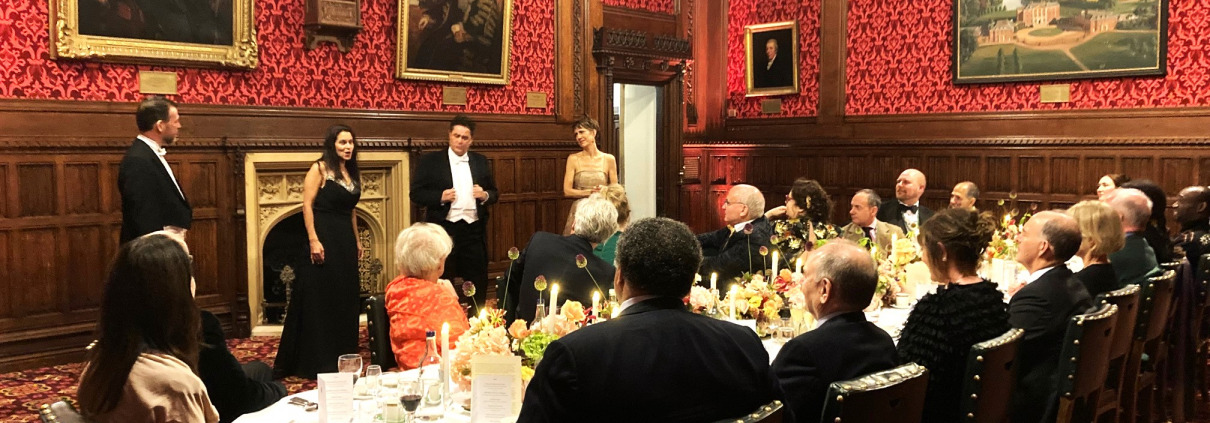
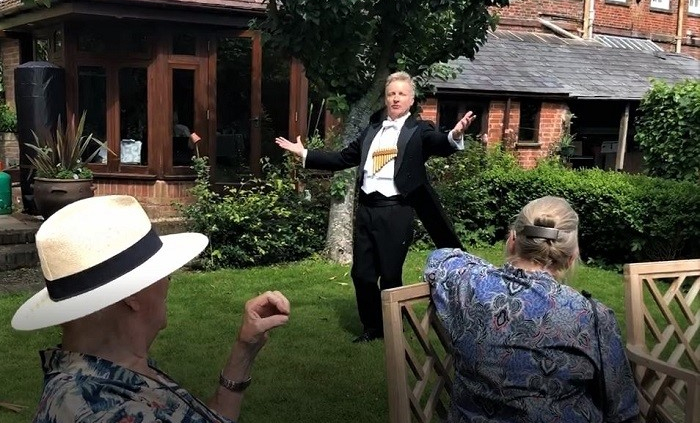
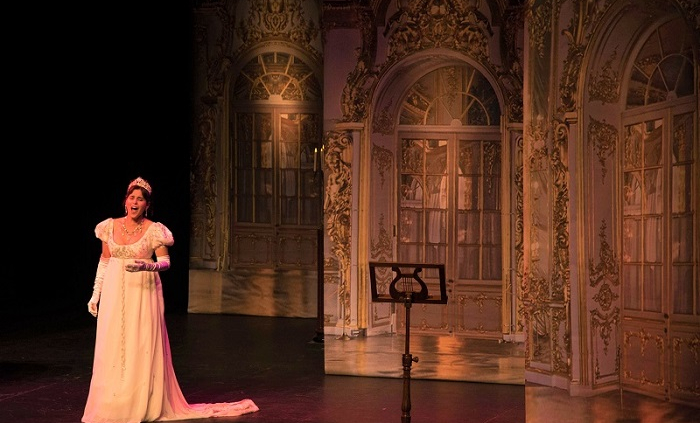 London Festival Opera
London Festival Opera
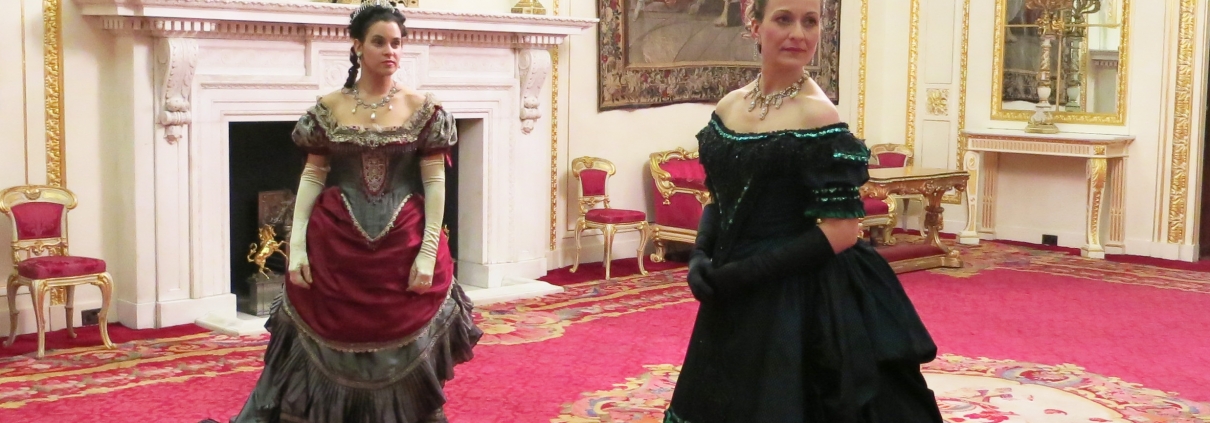
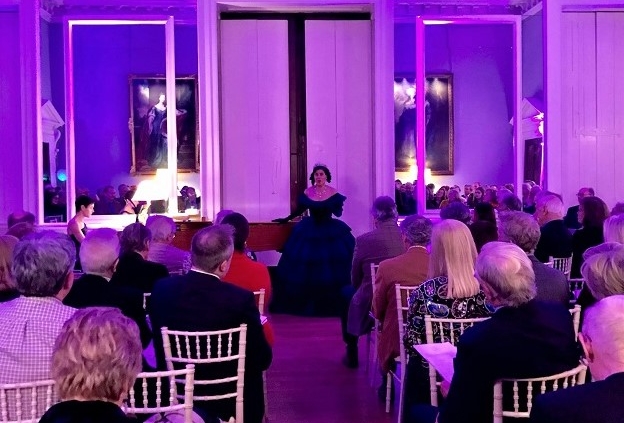 Opera Interludes Ltd
Opera Interludes Ltd